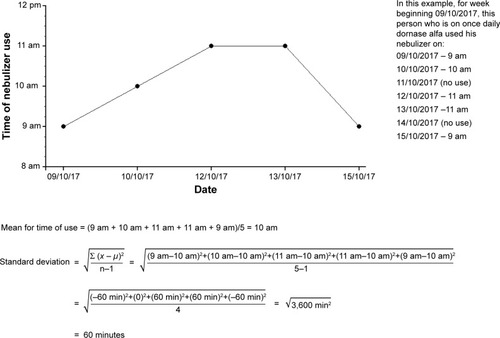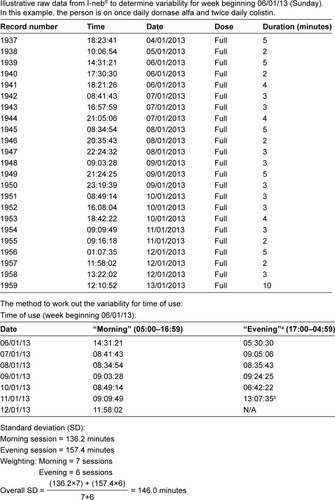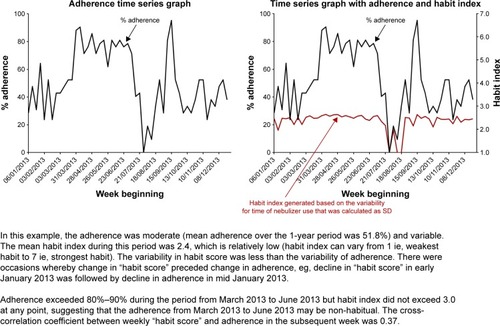Figures & data
Figure 1 An example to illustrate the calculation of SD as a measure of variability for the time of nebulizer use.

Figure 2 An example to illustrate the calculation of SD for time of use in someone using nebulizer over two sessions.
Abbreviation: NA, not available.

Figure 3 Illustrative habit index (generated from time of nebulizer use) and adherence time series graphs.

Table 1 The cross-correlation coefficients (R) for the habit index and subsequent adherence
Table 2 The unstandardized regression coefficients (B)Table Footnotea for the habit index, using time-ordered habit index and current adherence as the covariates with subsequent adherence as the dependent variable in a multiple regression
